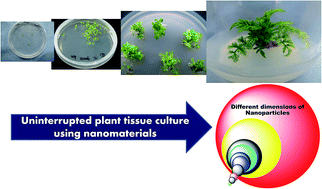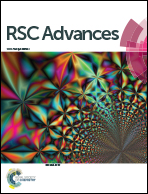Nanomaterials in plant tissue culture: the disclosed and undisclosed
Abstract
Plant tissue cultures are the core of plant biology, which is important for conservation, mass propagation, genetic manipulation, bioactive compound production and plant improvement. In recent years, the application of nanoparticles (NPs) has successfully led to the elimination of microbial contaminants from explants and demonstrated the positive role of NPs in callus induction, organogenesis, somatic embryogenesis, somaclonal variation, genetic transformation and secondary metabolite production. This review aims to consolidate all of the current achievements made through the integration of nanotechnology into plant tissue culture and highlight the positive attributes of using NPs in plant tissue culture. Both the positive and adverse effects of using NPs in the culture medium are discussed and presented. The toxicity aspects and the safety concerns of exposing plants and the associated environment to NPs are recorded. Finally, future prospects through the involvement of not merely Ag, TiO2, and ZnO NPs, but more recent innovations such as graphene, carbon nanotubes, SiO2, quantum dots, and dendrimers are proposed. The undisclosed shadows hanging in the background, including the repercussions of using nanomaterials without proper awareness, as well as dosage-based adverse effects and nanotoxicity aspects, are highlighted. The need for more research in the pursuit of discrete answers to unresolved questions regarding mechanisms is emphasized as the key to real progress in plant nanobiotechnology.

- This article is part of the themed collections: 2018 Open Access Week Collection, 2017 and 2018 RSC Advances Reviews from Around the World, 2017 Review articles and RSC Advances: Most downloaded articles of 2017


 Please wait while we load your content...
Please wait while we load your content...